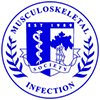Authors: Branstetter JG, Jackson SR, Haggard WO, Richelsoph K, Wenke JC, Brooke Army Medical Center, Fort Sam Houston, TX
Title: Locally administered antibiotics in extremity wounds
Purpose: We evaluated the ability of local antibiotic administration using fast-resorbing calcium sulfate pellets and polymethylmethacrylate (PMMA) beads to reduce bacteria in a contaminated musculoskeletal wound animal model.
Methods: A complex musculoskeletal wound was created on the hindlimb of twenty goats and was contaminated with Pseudomonas aeruginosa (lux) bacteria, which is genetically modified to emit photons. This allows for quantification of bacteria with a photon-counting camera system. The wounds were closed and similarly debrided and irrigated with 9 liters of normal saline with a bulb syringe at six hours after inoculation. Goats were assigned to one of three treatment groups: a control group with plain calcium sulfate pellets, an experimental group with calcium sulfate pellets with 4% amikacin by weight, and a clinical standard group with PMMA beads and 4% amikacin by weight. The wounds were reassessed at 48 hours. Photon counts from the luminescent bacteria were taken immediately before and after debridement and at 48 hours.
Results: The photon counts for the three groups were similar during the pre debridement assessment 6 hours after bacterial inoculation (p = 0.85). Debridement and irrigation reduced the bacteria to 12-17% of the baseline in the three groups (p = 0.74). However, at 48 hours the bacteria within the wounds of the plain calcium sulfate group rebounded to 159% of the pre-irrigation level. This was statistically different (p < 0.004) from the two groups with antibiotics. The PMMA beads with amikacin and calcium sulfate with amikacin groups reduced the bacterial photon counts to 3 and 0.4% of the initial pre-irritation counts, respectively. These two antibiotic groups showed similar ability to reduce the bacteria (p = 0.99).
Discuassion and Conclusion: Local antibiotic administration via calcium sulfate or PMMA effectively reduces bacteria in a contaminated extremity wound. The plain calcium sulfate pellets without antibiotic act similar to historical control animals in previous experiments at our institution that were treated with only irrigation and sharp debridement. A resorbable, pre-made local antibiotic delivery system like calcium sulfate has many advantages over the traditional PMMA beads. A second surgery is necessary to remove the retained PMMA, the making of the beads is time and labor intensive, and much of the antibiotic remains sequestered in the beads. These data suggest that a more liberal use of local antibiotics may prevent multiple debridements, the need for long-term administration of systemic antibiotics, and infections. Future work will focus on developing a more ideal off-the-shelf antibiotic delivery device.

